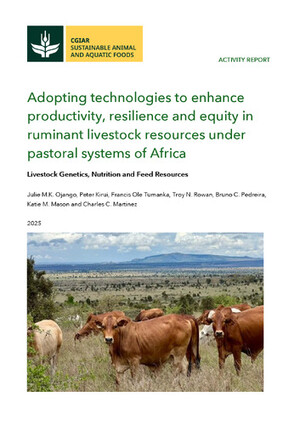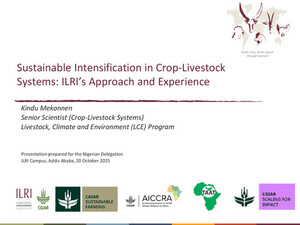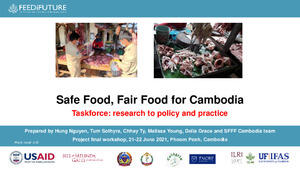
Geographic distribution of cattle and shoats populations and their market supply sheds in Ethiopia
Abstract
This document identifies and maps the geographical distribution of livestock populations, and domestic and export livestock market routes and their respective supply sheds in the main production areas in Ethiopia. These maps are based on the latest digitized livestock population data from Ethiopia's Central Statistical Authority (CSA) and the International Livestock Research Institute (ILRI). Secondary data from published and unpublished sources and key informant interviews were also used to identify key livestock market routes and map the major urban livestock markets, market routes and supply sheds. The maps showed that the highest numbers of cattle and shoats are to be found along a north-south transect covering parts of the central highlands of Tigray, Amhara and Oromia regions, and the transect that connects Nazret (Adama) and Dire Dawa. Conversely, very low livestock numbers occur in pastoral areas like Afar, Ogaden, and Boran; this would be normally expected. Well-documented maps and descriptions of the geographic distribution of livestock populations and interregional and cross-border livestock trade routes in Ethiopia are rare. This study attempts to fill this gap by producing maps based on Geographic Information Systems (GIS) of the geographical distribution of cattle and shoats' populations, major domestic markets, domestic and export market routes for livestock and their supply sheds in Ethiopia.
Citation
Jabbar, M.; Negassa , A.; Gidyelew, T. 2007. Geographic distribution of cattle and shoats populations and their market supply sheds in Ethiopia. ILRI Improving Market Opportunities Discussion Paper. no. 2. 54p. + CD ROM. Nairobi (Kenya): ILRI.










